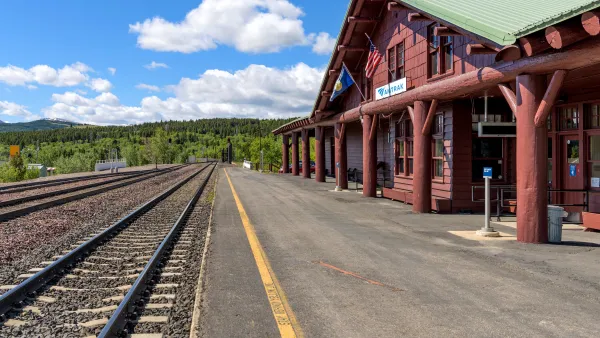The Mississippi and Missouri rivers were once dramatically wider, but a century of re-engineering has constricted their courses, making "flood magnification" inevitable.
"The floodwaters are starting to ebb in the swollen Mississippi, which in the past few weeks has seen its worst flooding in 15 years. Since May, at least 24 people have died from the torrential rains and flooding, more than 38,000 people have evacuated their homes and an estimated 5 million acres of corn and soybean have been waterlogged. But as the great mop-up begins, some scientists contend this is one natural disaster that is by no means just natural: It is the dramatic result of more than 100 years of narrowing and constricting the river.
[Scientists] charge that structures built by the U.S. Army Corps of Engineers to aid the shipping industry are contributing to the flooding. They're calling for the National Academy of Sciences to have oversight over Army Corps river projects, and for the federal agency to refrain from building structures that exacerbate the floods.
Even before the recent deluge, scientists sounded the alarm. Back in March, weeks before the floods occurred, Criss, Pinter and professor Timothy Kusky of St. Louis University sent a letter to the commander for the St. Louis district of the Army Corps of Engineers, critiquing the new structures that the agency puts into the Mississippi and Missouri to make it easier for large barges to navigate the area.
The dramatic reengineering of the Mississippi through levees and other structures has been going on for over 100 years. Way back in 1837 when then-Lt. Robert E. Lee of the Army Corps of Engineers mapped the Mississippi at St. Louis, it was almost 4,000 feet wide. Today it's just 1,500 feet wide at St. Louis. The Missouri river has also been drastically shrunk.
Now that the river can't naturally spread out on its flood plain or meander, the extra water under flooding conditions has nowhere to go."
FULL STORY: A deluge waiting to happen

Analysis: Cybertruck Fatality Rate Far Exceeds That of Ford Pinto
The Tesla Cybertruck was recalled seven times last year.

National Parks Layoffs Will Cause Communities to Lose Billions
Thousands of essential park workers were laid off this week, just before the busy spring break season.

Retro-silient?: America’s First “Eco-burb,” The Woodlands Turns 50
A master-planned community north of Houston offers lessons on green infrastructure and resilient design, but falls short of its founder’s lofty affordability and walkability goals.

Test News Post 1
This is a summary

Analysis: Cybertruck Fatality Rate Far Exceeds That of Ford Pinto
The Tesla Cybertruck was recalled seven times last year.

Test News Headline 46
Test for the image on the front page.
Urban Design for Planners 1: Software Tools
This six-course series explores essential urban design concepts using open source software and equips planners with the tools they need to participate fully in the urban design process.
Planning for Universal Design
Learn the tools for implementing Universal Design in planning regulations.
EMC Planning Group, Inc.
Planetizen
Planetizen
Mpact (formerly Rail~Volution)
Great Falls Development Authority, Inc.
HUDs Office of Policy Development and Research
NYU Wagner Graduate School of Public Service




























